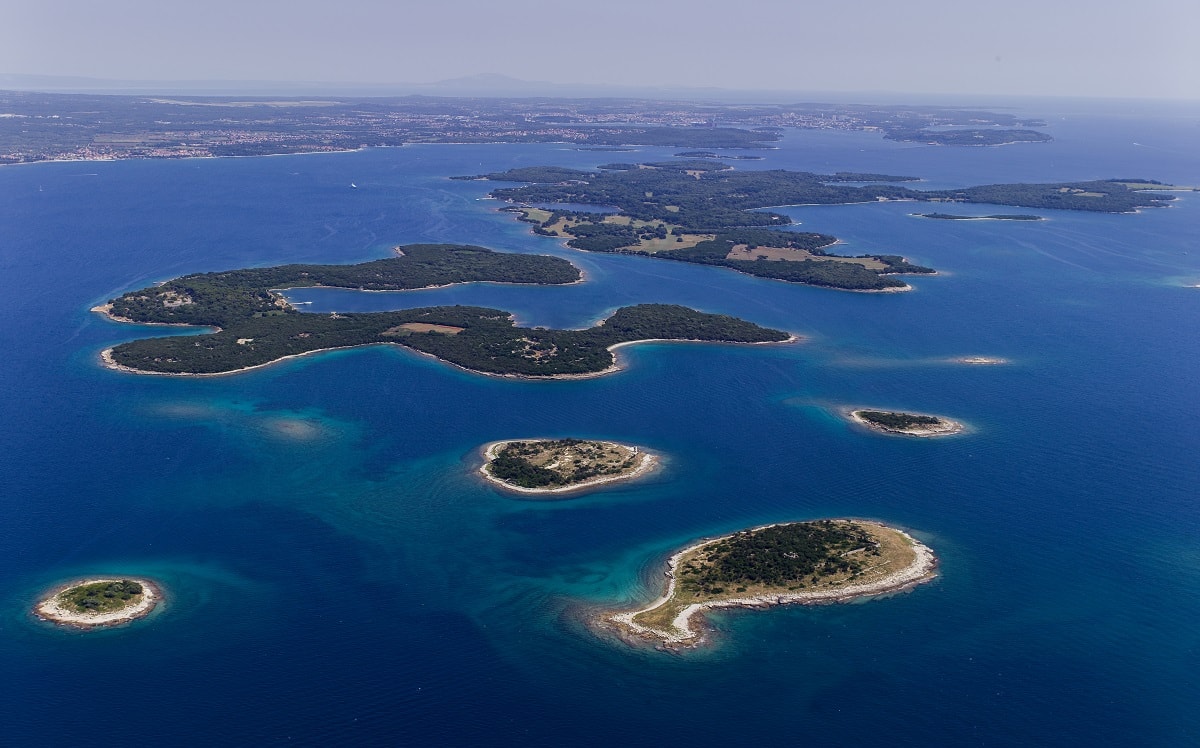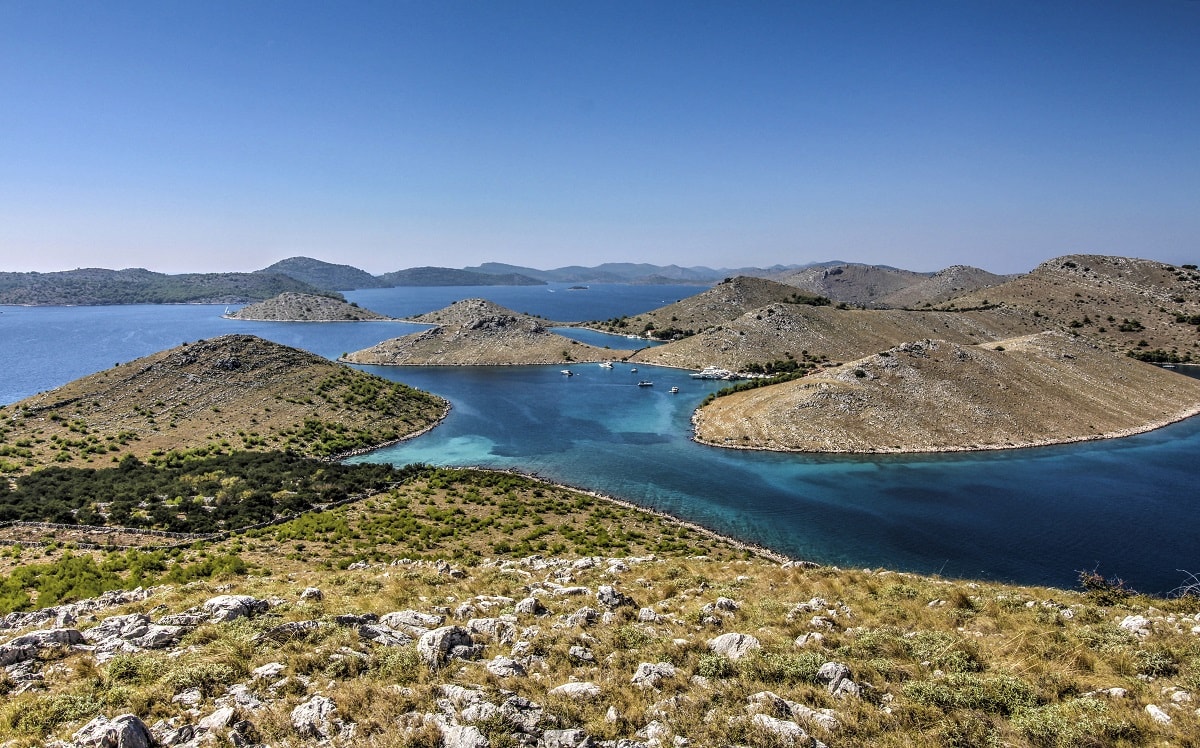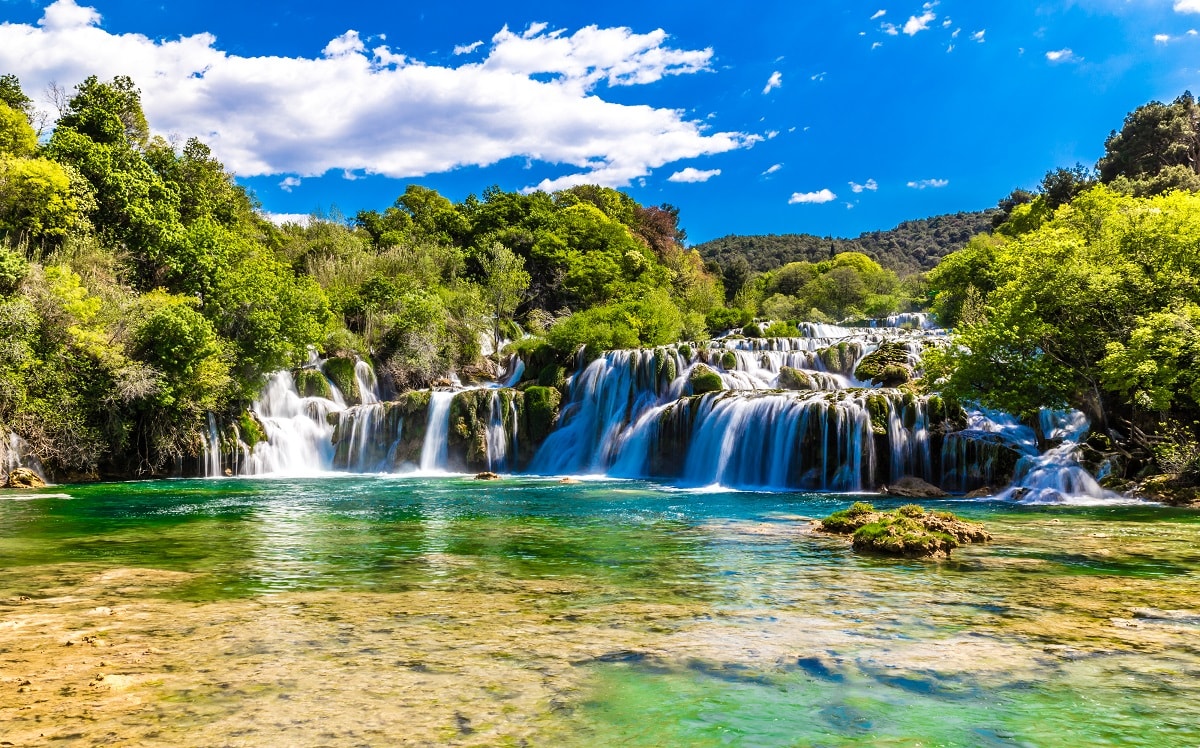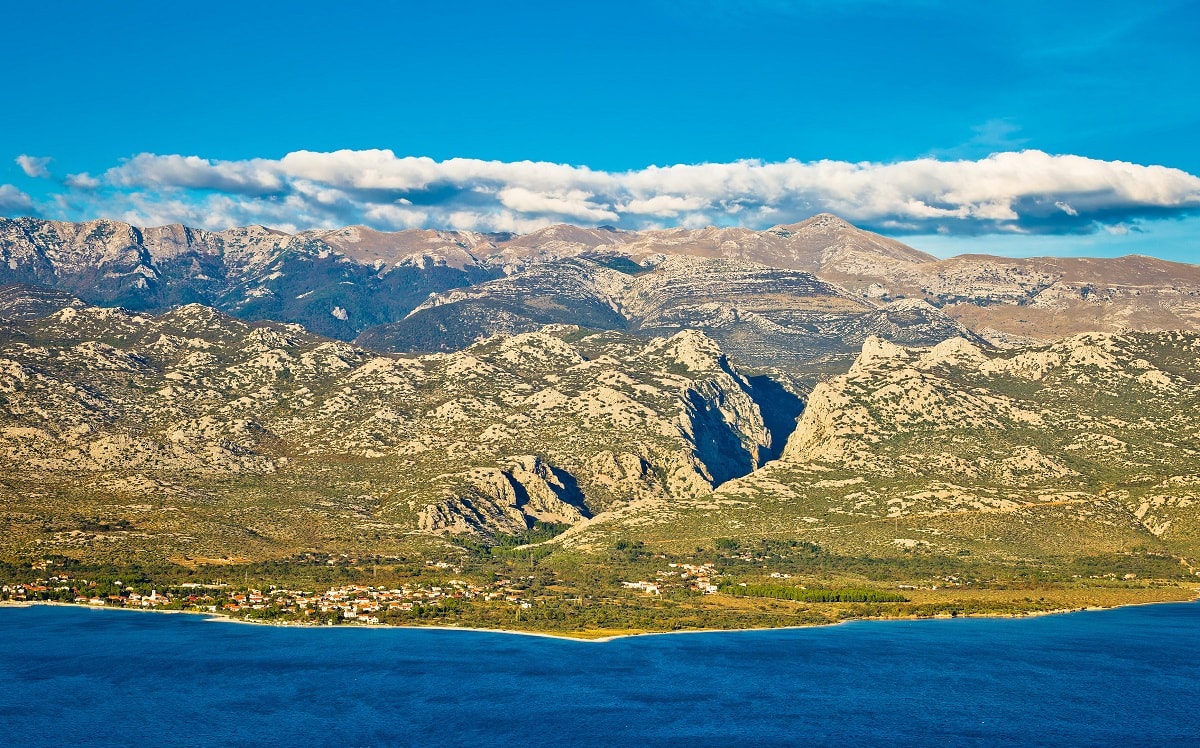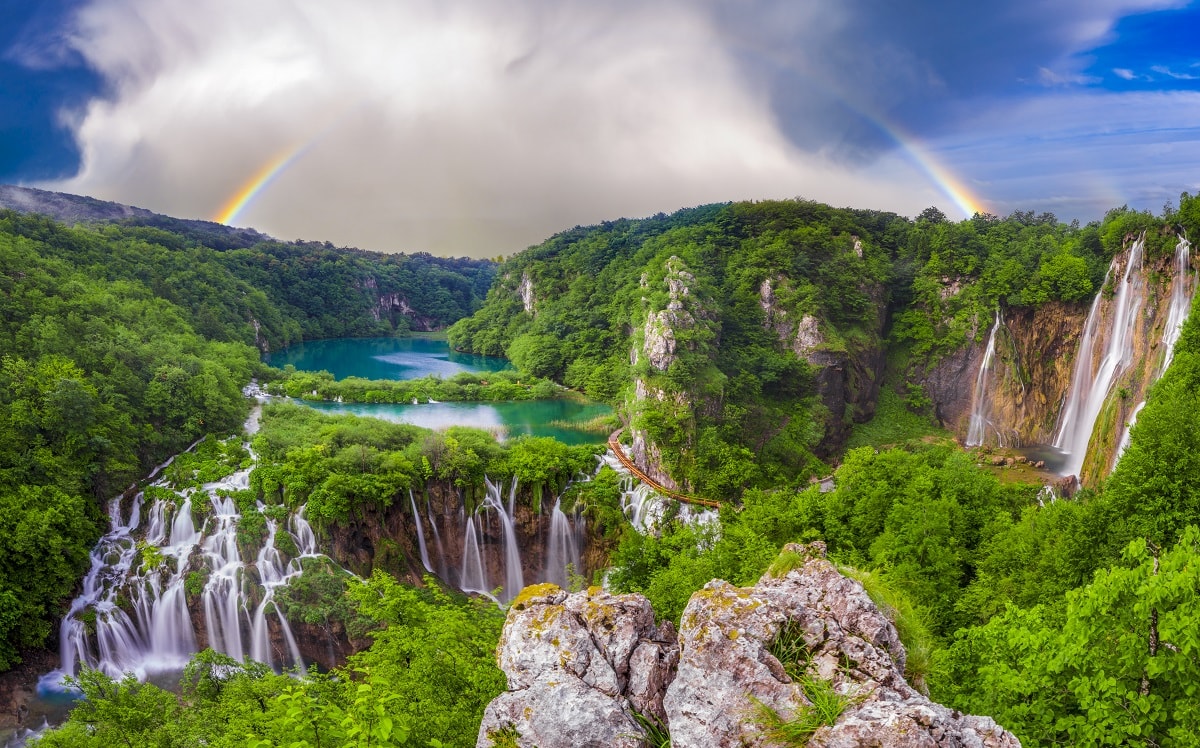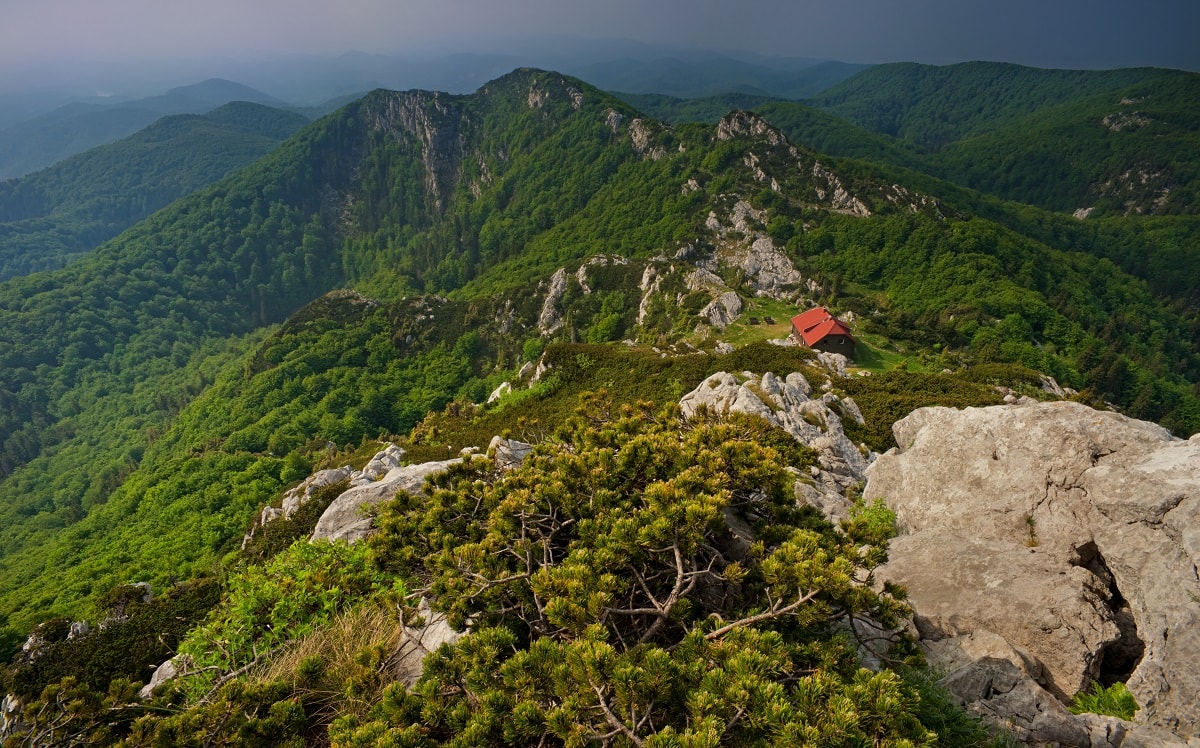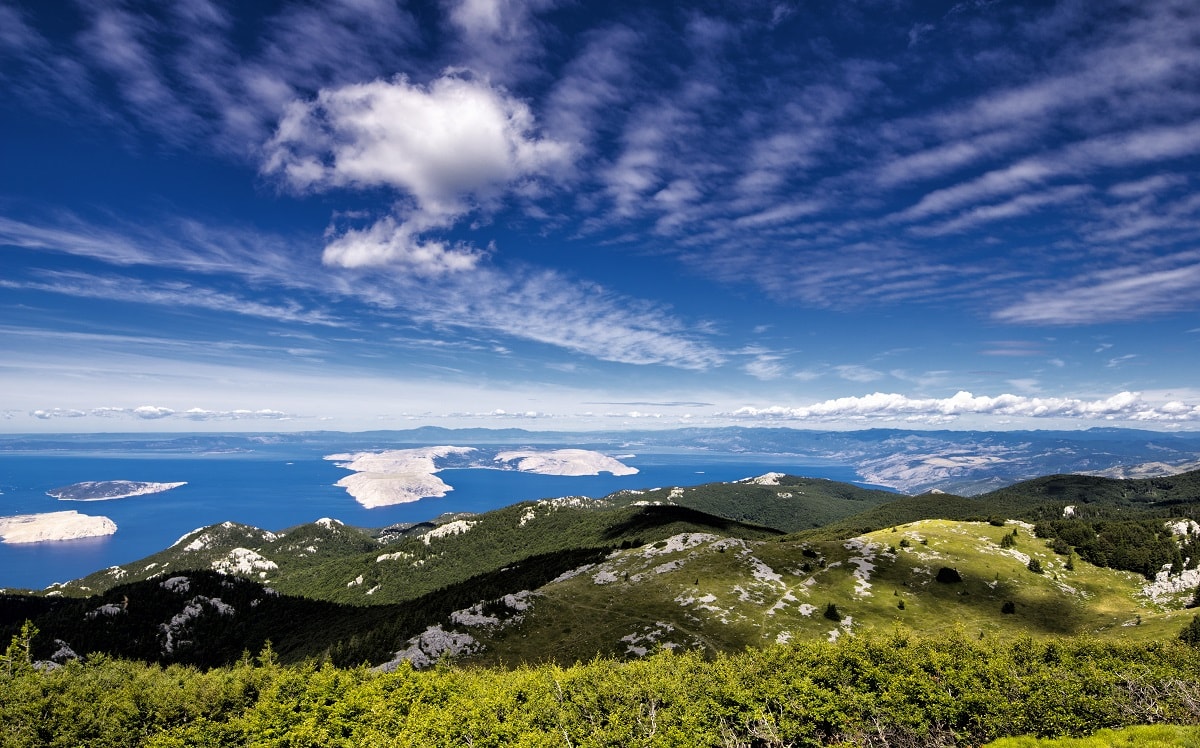Geography
The Republic of Croatia is regarded as one of the most interesting and beautiful countries in the world. It mainly deserves this to its geographical position. Croatia occupies the largest part of the eastern coast of the Adriatic sea which, as a part of the Mediterranean sea, penetrates deepest into European soil. The narrow Dinarides mountain range separates the country's Mediterranean region from its central European continental part, which spans from the easterly edges of the Alps in the north-west to the shores of the Danube in the east, encompassing the southern part of the fertile Pannonian plain. Thanks to its 3 very distinct regions (Adriatic, Dinaric, and Continental/Pannonian), Croatia is abundant with natural beauties;
Adriatic sea
Intensively blue Adriatic Sea is 783 km long, of which the total coastline including the islands is 7868 km long. The Croatian part occupies as much as 74%, or 5,835 km of Adriatic coastline and represents the true Mediterranean from pleasant climate to Mediterannean (Laganini) lifestyle. Croatia has more than 1000 islands of which 48 are permanently inhabited. Here is located the densest archipelago in the Mediterranean Sea (Kornati islands) and sea clarity is among the highest in the world (up to 56 m). The sea depth in the north along the shoreline of Istra is up to 50 m deep, while along the island of Palagruža going up to 250 m deep and near the farthest island of Jabuka going up to 1300 meters in-depth. The average sea temperature in summer ranges between 22-27 °C and the lowest winter temperature about 7 °C, and in the spring pleasant 18 °C.
Dinaric Alps/Dinarides
The Mountain part of Croatia occupies the far northwestern part of the Dinaric mountain range. It is divided into 2 main subregions: Gorski Kotar and Lika. It is a relatively high karst region, built predominantly from Mesozoic limestones and distinctly separated from the Mediterranean and Panone areas. Here are located one of the highest mountains in Croatia; Risnjak, Snježnik, Velebit, Plješevica, Mala, and Velika Kapela. The greater part of this area, especially in Lika are big karst fields separated from each other by highlands. This area is very sparsely populated and is abundant in natural beauty, preserved nature, and beautiful vistas. Here are located 3 national parks; Plitvice Lakes, Risnjak and Northern Velebit that attract more and more tourists and nature lovers. This is the perfect area for many outdoor activities like mountaineering, walking, skiing, bicycle riding, but also for a peaceful vacation surrounded by forests, mountains, and fresh mountain air.
Pannonian Plain
The largest part of Croatia is located in the lowland area - Continental Croatia (comprising 55% of the territory and 66% of the population). Here is located a part of Pannonian plain (Slavonia) and the hilly area (Central Croatia). The largest rivers of Croatia are passing this region; the Danube river, the Sava, and the Drava. This region is rightfully called the granary of Croatia because of its rich fertile land, where is produced most of the food in Croatia. The capital city of Zagreb is located here (economic and political center of Croatia). Recently, this area has been attracting more and more tourists visiting the Croatian metropolis, but also other tourist attractions such as castles in Hrvatsko Zagorje, the baroque town of Varaždin, the natural beauties of Slavonia, numerous cultural events...
Climate & Weather
Croatia has three climate zones. Interior is moderately warm and rainy, while Croatia's highest peaks have a mountain climate which includes heavy snowfall. The areas along the Adriatic coast have a pleasantly mild Mediterranean climate with a large number of sunny days, summers are hot and dry and winters are mild and wet. Average temperatures in continental Croatia are January -2 to 0 °C, with somewhat lower temperatures at the highest altitudes. In August are approximately 20 °C, with around 12 °C in mountains at the highest altitudes. Average temperatures on Adriatic Coast are in January -5 to 9 °C, in August from 22 to 25 °C. The sea temperature in winter is 12 °C and approximately 25 °C in summer.
Weather in Croatia and when is best time to visit Croatia? We would say spring (May and June) and autumn (September and October) to avoid the tourist peak season (July and August) and crowds. May and the first half of June is a great time to visit Croatia, as temperatures have already risen to pleasant levels and days are longer and longer. September and early October have plenty of sunny weather with very warm temperatures, and the sea is still warm and pleasant enough for swimming.
Culture & History
If you are interested in the days of antiquity, you should start from the Roman amphitheater in Pula, through Zadar and its forum - the largest excavated forum on the eastern shores of the Adriatic - and then to the magnificent palace of Emperor Diocletian in Split. Go through time, from the pre-Romanesque Church of St. Domnius in Zadar dating from the 9th century to the Romanesque period in the magical city of Trogir, or the islands of Krk and Rab. Explore the Gothic period in Zagreb, Pazin, or the town of Ston on the Pelješac peninsula. Discover the Renaissance in Osor on the island of Cres, cathedral of St. Jacob in Šibenik and the islands of Hvar and Korčula. Finally, visit the one and only old town of Dubrovnik with its magnificent citywalls. The towns of Varaždin, Bjelovar, and Vukovar glow with the splendor of the Baroque, while the heritage of the 19th century has been best preserved in Rijeka, Osijek and, of course, in downtown Zagreb.
Gastronomy
Croatian cuisine is heterogeneous and is specific for every region (Istria, Dalmatia, Lika, Gorski Kotar, Zagorje, Slavonia) since every region of Croatia has its own distinct culinary tradition.
- The continental cuisine is typical for its early proto-Slavic roots and more recent contacts with Hungarian and Turkish cuisine. Meat products, freshwater fish, and vegetables dominate using spices such as black pepper, paprika, and garlic. Some of the typical continental dishes are goulash, fiš-paprikaš (spicy fish stew from Slavonia), štrukli(baked or cooked filled pastry from Zagorje), Sarma (Sauerkraut rolls with minced pork meat and rice), ćevapčići(grilled minced meat), Kulen (spicy pork sausage from Slavonia)...
- The coastal region is characterized by the influences of the Greeks, Romans, Illyrians, and later Mediterranean cuisines, especially Italian. It features many seafood specialties (squid, cuttlefish, octopus, shrimp, fish stew - brudet...) but also meat delicacies like roasted lamb or Pašticada(Dalmatian beef stew with prunes and dried figs). In almost every dish goes olive oil and the most common spices used are rosemary, sage, bay leaf, oregano, marjoram, cinnamon, clove, nutmeg, and lemon and orange rind. Don't miss to taste famous delicacies like Dalmatian or Istrian prosciutto, cheese from Pag, eels and frogs from the Neretva valley, oysters and mussels from Ston, fritule (a deep-fried pastry) and Dalmatian wines such as Babić, Malvasia, Prosecco, Vrbnik Žlahtina, and various liqueurs like the famous Maraschino from Zadar.

Istrian and Dalmatian olive oil has exceptional extra virgin quality. You can visit many interesting olive oil roads during your stay in Croatia and participate in olive harvest during October and November and experience local customs and traditional way of life. In almost every private accommodation on the Adriatic coast, you can buy homemade olive oil, dry figs, local wine, or liqueurs. It is a long tradition and most of the households are still producing olive oil, wine, and other products for their needs and selling to their guests all extra quantities.
Currency
The official currency in Croatia is Euro (1 euro = 100 cents). Foreign currency can be exchanged in banks, exchange offices, post offices, and in the majority of tourist information offices, hotels, and campsites. Credit cards (Mastercard, Visa, American Express, and Diners) are accepted in almost all hotels, marinas, restaurants, shops, and cash machines.
We invite you to discover and enjoy the beauty of Croatia, its mild climate, crystal clear waters, beautiful beaches, and unspoiled nature. The perfect combination of rich history and cultural heritage, delicious cuisine, good wines, and natural beauties for perfect holidays. Above all, meet friendly Croatians and their Laganini style of life!




